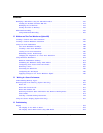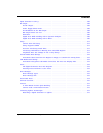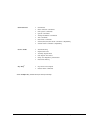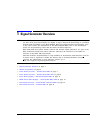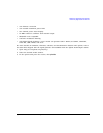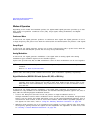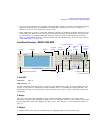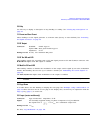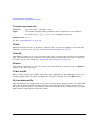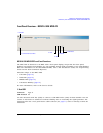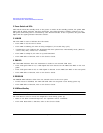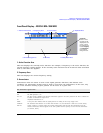
4 Agilent N5161A/62A/81A/82A/83A MXG Signal Generators User’s Guide
Signal Generator Overview Preliminary
Modes of Operation Preliminar
Modes of Operation
Depending on the model and installed options, the Agilent MXG signal generator provides up to four
basic modes of operation: continuous wave (CW), swept signal, analog modulation, and digital
modulation.
Continuous Wave
In this mode, the signal generator produces a continuous wave signal. The signal generator is set to
a single frequency and power level. Both the N5161A/81A and N5162A/82A can produce a CW signal.
Swept Signal
In this mode, the signal generator sweeps over a range of frequencies and/or power levels. Both the
N5161A/81A and N5162A/82A provide list and step sweep functionality.
Analog Modulation
In this mode, the signal generator modulates a CW signal with an analog signal. The analog
modulation types available depend on the installed options.
Option UNT provides AM, FM, and ΦM modulations. Some of these modulations can be used together.
NOTE The Mod On/Off hardkey and LED functionality are only valid for MXGs with Option UNT
installed.
Refer to 14. Mod On/Off and LED.
Options UNU and UNW provide standard and narrow pulse modulation capability, respectively.
Digital Modulation (N5162A/82A with Options 651, 652, or 654 Only)
NOTE The internal baseband generator speed upgrade Options 670, 671, and 672 are option
upgrades that require Option 651 and 652 to have been loaded at the factory (refer to the
Data Sheet for more information). Any references to 651, 652, or 654 are inclusive of 671,
672, and 674.
In this mode, the signal generator modulates a CW signal with a arbitrary I/Q waveform. I/Q
modulation is only available on the N5162A/82A. An internal baseband generator (Option 651, 652, or
654) adds the following digital modulation formats:
• Custom Arb Waveform Generator mode can produce a single–modulated carrier or
multiple–modulated carriers. Each modulated carrier waveform must be calculated and generated
before it can be output; this signal generation occurs on the internal baseband generator. Once a
waveform has been created, it can be stored and recalled, which enables repeatable playback of
test signals. To learn more, refer to “Using the Arbitrary Waveform Generator” on page 261.
• Multitone mode produces up to 64 continuous wave signals (or tones). Like the Two Tone mode,
the frequency spacing between the signals and the amplitudes are adjustable. To learn more, refer
to “Creating a Custom Multitone Waveform” on page 287.



